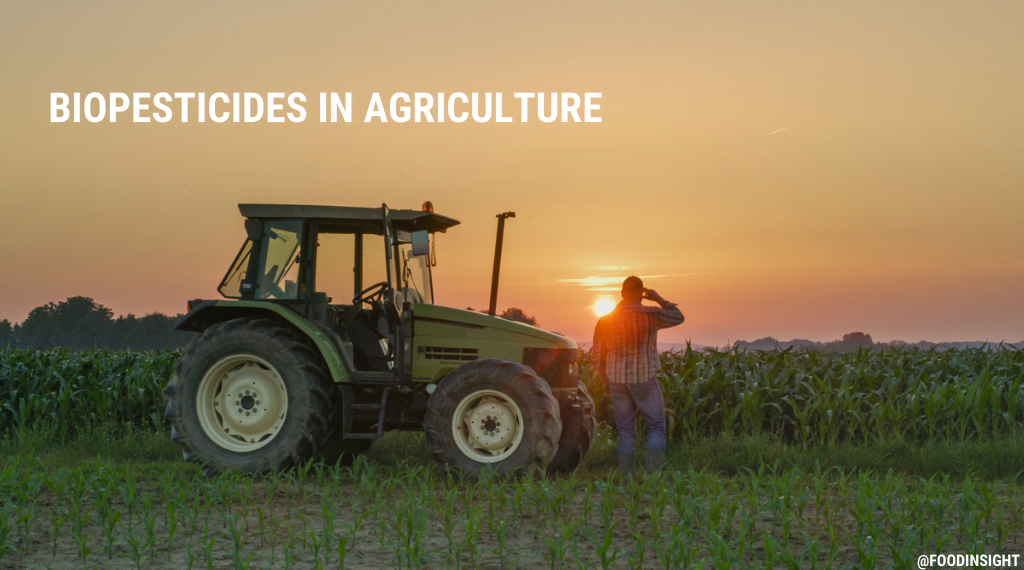World Food Day, October 16, is right around the corner and its occurrence may cause many of us to have thoughts about how our planet’s natural resources, such as water, provide food and help sustain us through innovations in agriculture. Thoughts such as these are closely linked to crop management practices used by farmers to support our food system. Using the natural resources of water, energy and soil in order to grow food for us to eat is not taken lightly by farmers; in fact, farming technology has advanced in many ways to reduce the depletion of these resources. Among these more Earth-friendly advances are crop-protection techniques that leverage natural plant-produced pesticides to ward off pests. These naturally occurring substances are called biopesticides, or biologicals. Biologicals are a prime example of how farmers utilize natural defense mechanisms to enhance productivity and minimize man-made chemical use, thus saving energy and reducing chemical environmental impacts. Never heard of biologicals? Let’s dive in.
Biologicals: A Background
Biopesticides are products derived from living organisms or metabolic products of organisms (such as plants and microbes) that suppress or control pests like weeds, insects and plant pathogens (including bacteria, fungi, viruses and other microbes). The Environmental Protection Agency (EPA) notes that biologicals also include “microorganisms that control pests (microbial pesticides) [and] pesticidal substances produced by plants containing added genetic material (plant-incorporated protectants) or PIPs.”
Biopesticides have several different modes of action. These include the production of toxic metabolites that can keep a pest from living and multiplying and the production of substances that change plant physiology in order to directly or indirectly inhibit pest activity (such as the production of substances that “tie up” key nutrients needed by the pest).
All farms are required to follow United States Department of Agriculture (USDA), Food and Drug Administration (FDA) and EPA safety regulations to grow and harvest crops. These guidelines govern all foods equally, no matter what methods of crop protection suit each farm, and include farms that use either synthetic pesticides or biologicals.
As with synthetic pesticides, the EPA always conducts systematic scientific reviews to ensure that registered biological pesticides will not harm people or the environment. While these natural pesticide products have shown to be a handy and safe way for farmers to grow more of the great foods we enjoy, there is also a system in place to help further categorize biologicals and how they effectively treat pests—the Interregional Project Number 4 (IR-4). IR-4 has developed a database that allows farmers to search for biopesticide and organic products that control specific pests. Further, IR-4 also has a Biopesticide and Organic Support Program that works to expand the development and availability of biopesticides for use in the pest-management systems for various types of crops.
How do biologicals fit into a farmer’s toolbox?
Pesticides (biologicals or synthetic) are one of many tools farmers use to protect their crops, similarly to how many of us use various pesticides to protect plants in our own gardens (think homemade vegetable oil spray or treatments bought at a store). Both conventional and organic farmers try to control insects, weeds, fungi or diseases using a variety methods and tools. Tools such as biologicals, or other pesticides, can be key components in a farmer’s Integrated Pest Management (IPM) program—a combination of techniques employed to secure both crop productivity and environmentally sustainable pest reduction for conventional and organic crops. The establishment of an IPM helps farmers know when or if pesticides are needed, what amount of treatment is required and what is the best form of treatment to strategically remove pests. Because IPM programs have a focus on being environmentally sustainable, farmers will often reach for biologicals to support their pest management as they deploy their IPM programs.
What constitutes a farmer’s IPM program can vary from one farm to the next, but there are four core elements that are steadfast according to the EPA:
- Action Thresholds
Setting an action threshold—a point at which pest populations or environmental conditions indicate that pest control action is warranted—is the first step in establishing an IPM. This threshold tells the farmer when protection measures should be enacted. Seeing one bug or weed doesn’t mean immediate pest treatment is needed.
- Monitor and Identify Pests
Precisely looking at levels and types of pests influencing crops is crucial as well. Not all insects, weeds and other living organisms require control. Many of these are not harmful, and some are helpful.
- Prevention
Threat prevention is an additional attribute of IPM programs for crops. Prevention may draw on cultural methods such as crop rotation, selecting pest-resistant crop varieties, and planting pest-free rootstock.
- Control
If the completion of steps 1–3 shows that pest control is required, IPM programs will then select for an effective and precise control method, such as the use of highly targeted chemicals like pheromones to disrupt pest mating or mechanical controls like trapping or weeding.
If the preliminary IPM steps are not effective, then the IPM will call for the farmer to repeat the above-listed steps. However, the next control step will include new pest control methods (such as the spraying of pesticides).
This World Food Day, IFIC is especially grateful for the well-equipped toolboxes farmers have on hand. Having an abundant and reliable food-supply chain depends on a variety of both time-tested and newer pest control techniques, including the advancing field of biopesticides. It’s not a light lift for farmers to ensure crop productivity—but it’s certainly appreciated.
